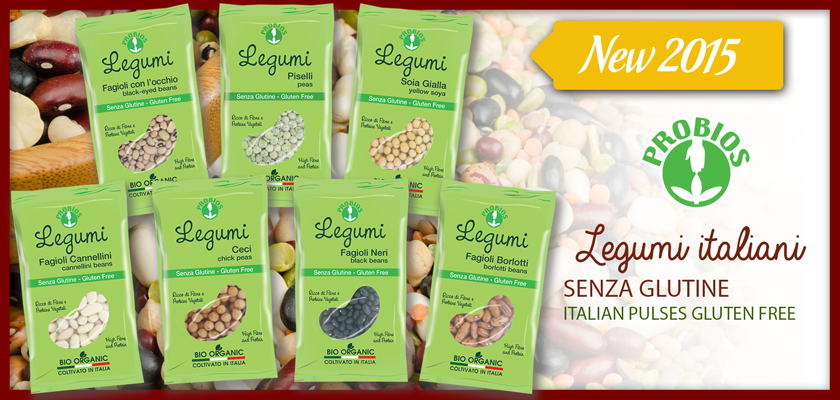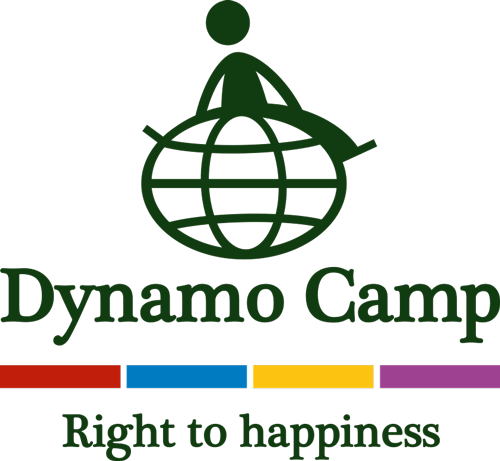
However, it’s necessary to clarify that this definition means that the product is guaranteed to have a gluten content of less than 20 ppm (parts per million or mg/kg), the thereshold current scientific knowledge (and European legislation), consider completely safe for celiac.
To get this guarantee it‘s not sufficient to use naturally gluten free raw materials, but it‘s also necessary that the product doesn’t get contaminated with gluten during all stages of the production process, from processing to packaging.
It then provides for a specific section of the HACCP plan for the appropriate risk assessment of the allergen gluten and the risk management of cross-contamination or cross contamination.
This is why Probios offers several products that are labeled "gluten-free" although products that don’t contain it at the origin (such as legumes, seeds etc ..), this allows the consumer to get tranquillity through the claim on the package buying a product that meets certain standards.
The foods are fit for consumption of celiac only if they fall into at least one of the following six categories.
1. Naturally gluten-free
In nature there are many foods that can be consumed freely by celiacs, as naturally gluten-free and for which in the course of their production process, the risk of cross-contamination is minimal. These foods can be consumed, however, after checking that the label doesn’t indicate the presence of ingredients not allowed or the wording "may contain traces of cereals containing gluten." These categories of foods are not expected to enter into the AIC handbook, the granting of the crossed ear, the loanability, nor the phrase "gluten-free" on the label. Only for the purpose of example we show below the main categories: meat and fish as they are, eggs, milk, vegetables, fruit.
2. Crossed Ear logo issued by Italian Celiac Association
The “Crossed Ear” is a registered trademark owned by AIC (Italian Ceoliac Association), which grants the use after reviewing the manufacturing processes of the concerned companies. AIC has an idependent technical structure to achieve self-direct all the activities necessary to the evaluation of the products for which is requested the grant of the brand Crossed Ear.
3. Crossed Ear logo issued by other European Celiac Associations
There are symbols of “Crossed Ear” granted by the associations for celiac disease in other European countries, which graphically differs from the symbol granted by AIC. These symbols are granted with procedures and checks which vary according to the association that issued it. The maximum guarantee gluten content considered by the various associations of celiac of all countries of the EU, is still the same tolerated by AIC and the Community Regulation, ie 20 ppm.
It’s an ongoing process that is unifying the graphic form of the crossed ear. So there will soon be a single symbol granted by the associations for celiac disease of the various European countries.
4. Lettering "Dietary Gluten Free Product"
For Refundable Product from the National Health System
These products are called "gluten-free diet products" after a notification procedure to the Ministry of Health that provides an accurate audit and inspection at the production sites; the name is reserved for the products in categories bread (and bakery in general), cookies, biscuits, breadsticks, pasta etc. The products are placed on the National Register of gluten-free foods (available on the website of the Ministry), are loanable and then reimbursed by the National Health System. The label must carry a specific denomination "dietary product without gluten, suitable for celiac diet”.
Even the organic shops and health food stores may be authorized to sell refundable gluten-free products: they need just a specific request to the National Health Service. This is an excellent business opportunity, because the loyalty of the consumer, who will have one more reason to consider the store an important reference for his purchases.
Here, by way of example, we describe the standard procedure of reimbursement which can however vary between different regions and, therefore, between the ASL which depends on them (it’s therefore appropriate to inquire at the ASL of competence).
Usually, the procedure requires that the ASL delivers the celiac a voucher of annual expenditure, with a monthly breakdown of expenditure allowed, which varies according to the age of the celiac. The scale of expenditure allowed varies by region, and sometimes even based on the ASL. The voucher shows the code of the celiac person and are in denominations of 10 or 20 euro.
The celiac can buy them at any store that has submitted an application to their specific area of ASL.
The shop at the end of the month will invoice referred to a single celiac, on which usually are applied the tear off tabs removed from the product sold to the celiac. To our knowledge, the ASL reimburse with times varying from a minimum of 3 months up to a maximum of 12.
The requested inquirements by the ASL to the store are the obvious compliance hygienic/sanitary is informatic type : an interface with their ERP system is necessary.
5. Lettering "Gluten-Free"
For Not Refundable Products from the National Health System
According to the European regulation 41/2009, the producer who has appropriately adjusted its HACCP plan and is therefore able to ensure that the content of gluten in the product is less than 20ppm, can relate volountary on the label the lettering "gluten-free". This form of self-certification is subject to verification by the competent authority. This category covers products that do not fall in the category of bread (and styled bakery in general) and pasta, which we discussed in section 4), but those without a precise plan of self-control of the company, with a significant risk of contamination during production process and packaging.
6. Insertion in the AIC Handbook
The Handbook is a publication issued annually by AIC that collects the products which, although not designed specifically for a particular diet, still fit for consumption by celiacs. The companies self-certify the suitability of its products for consumption by people with celiac disease (as with gluten content of less than 20 ppm), caring also about the possible contamination during all stages of production. For each individual product AIC requires the completion in depth of the report cards, which are monitored and evaluated by a specific team of the association and only if they meet the scrupulous requirements, products are included in the publication. AIC also may at any time and without notice have available the products included in the handbook, analytical controls surveillance.
The products present in the handbook are labeled gluten-free on the package.
The Handbook also lists all the other products on the market suitable for celiacs of the different categories, except 1. there are reported all the products of the category 2, while for those in categories 3, 4, 5 in the presence in the Handbook is a choice of the single company .





